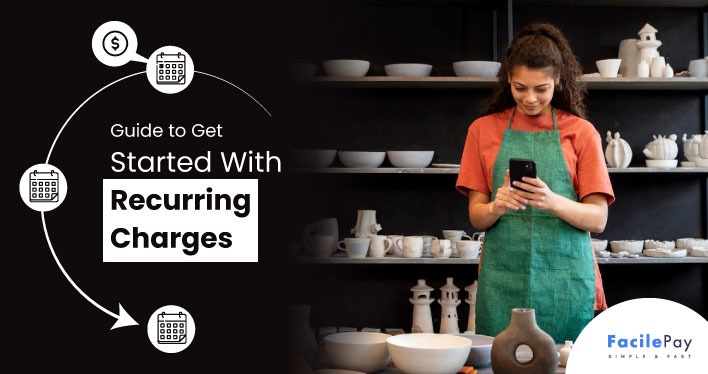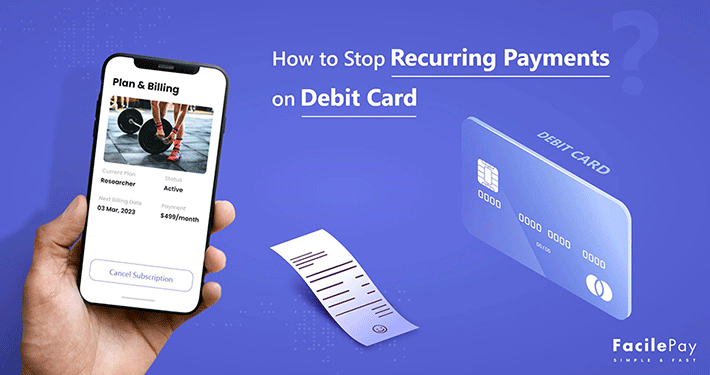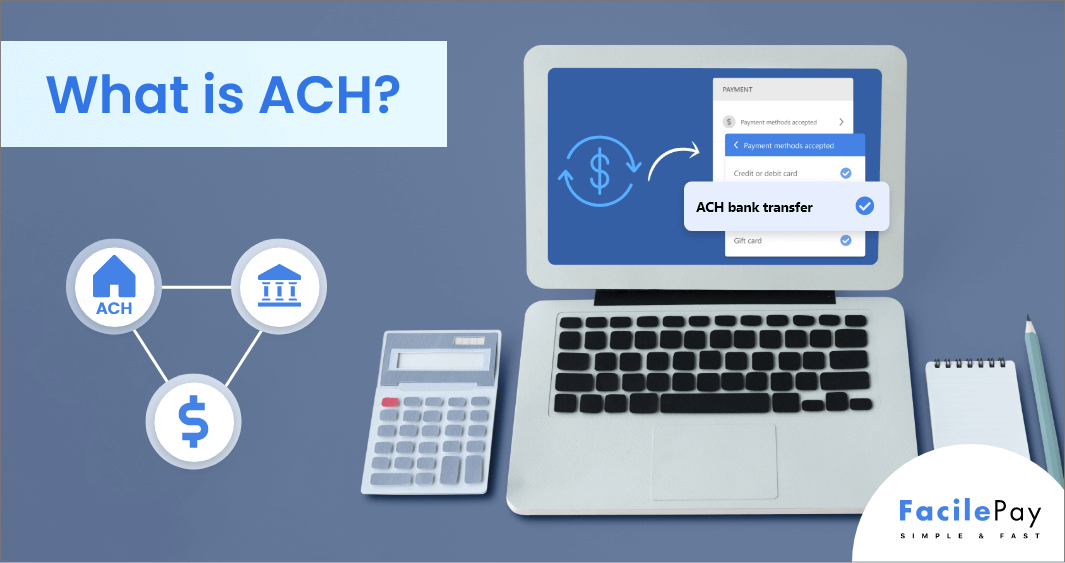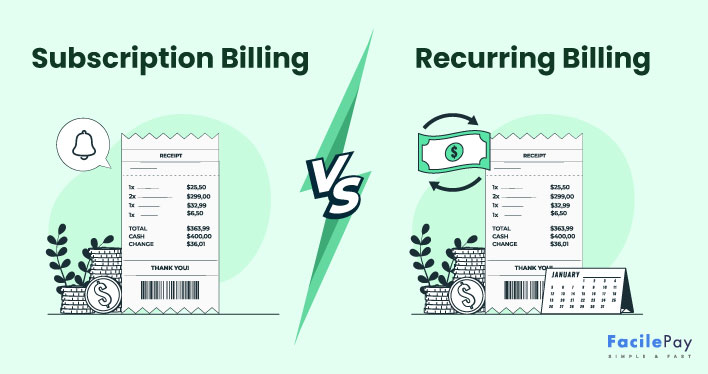- Recurring billing is a payment model where a customer is billed automatically at regular intervals for a subscription service.
- Recurring billing can benefit both the customer and the merchant, but it requires careful planning and execution to be successful.
- Recurring billing can help increase customer lifetime value and improve cash flow for businesses.
- Choosing the right recurring billing system is important for managing subscriptions and minimizing errors.
📝Key Takeaways:
Running a business always requires having a plan B in place to back up failures and remain risk-free from losses. If you are one of those subscription businesses looking for a unique approach to breakthrough hard times, you must be dealing with questions like:
- What strategy or approach can beat the market competition for the product/services provided?
- How to create a consistent revenue stream for the subscription businesses that helps attain stability
- How to personalize customer experience for the existing business offerings and gain loyalty
You have landed in the right place if you are going through the above challenges. You can make your business scale and grow with subscriptions creating a cash inflow from recurring charges. Businesses around the world have started leveraging subscriptions to enhance revenue, create a loyal customer base, and sail through hard market situations.
This blog will help you gain an understanding of what is recurring billing and guide you to get started with the right information based on the success of leading businesses.
In around 12 minutes, you will gain an understanding on:
- What is recurring billing and its benefits [with examples]
- How recurring billing work
- Steps to get started with recurring billing
Seems interesting? Let’s start.
Contents
- What is Recurring Billing? [+1 Example]
- 6 Challenges in Recurring Billing
- 5 Benefits of Recurring Charges [+1 Case Example]
- How Recurring Charges Work
- Pros and Cons of Recurring Billing
- How to Get Started With Recurring Billing?
- Frequently Asked Questions About Recurring Charges
- Get Started With Recurring Billing and Charge Your Customers for Consistent Revenue
What is Recurring Billing? [+1 Example]
Recurring billing is basically the automatic collection of the predefined amount for the use or access of a product or service at a set schedule. This implies that customers authorize you as a merchant or business to repeatedly charge a card. Everything starting from your monthly newspaper charges to daily milk delivery costs can be referred to as recurring charges.
To help you with a clear understanding of recurring charges, below is an example.
Netflix – A Popular Streaming Service Used in Every Household
Netflix is a popular name known to a large number of people across the world today. But, how it marked so much success and created its space? A simple answer is ‘using the subscription model’ and ‘recurring payments structure’.
Netflix has impressively leveraged subscriptions and doubled down on its business size and revenue with recurring charges. In fact, this is one of those streaming providers who have revolutionized the entire landscape of digital streaming and created scope for others.
Netflix offers different monthly subscription billing options to people who live together in a single household and earns from the recurring charges on its mobile, basic, standard, and premium plans. In fact, Statista report says that Netflix earned a revenue growth from $1.36 billion to over $26.7 billion in just 13 years. Additionally, there are 223 million active subscribers paying recurring charges monthly to this streaming provider. Isn’t it great?
Now do you understand the meaning of recurring billing? Let us now shift to what issues you may face as a subscription company and how to overcome them.
6 Challenges in Recurring Billing
Here are some of the recurring billing challenges that occur if the billing process is not streamlined.
1. Unscalable billing
The majority of subscription billing businesses are faced with the decision of whether to design their own billing system from scratch or use one of the commercially available options. The idea of creating billing in-house may appear economical. On the whole, nevertheless, it is a poor choice for the following reasons:
Managing increasing clients
Every new subscriber, pricing adjustment, acceptance of various payment methods, upgrade and downgrade requests, flexible billing, and prorations will exponentially increase the complexity of the code as you grow. This leads us to the second reason: operating an internal billing system will feel like operating a second product inside your main product at this stage.
Time management
Any SaaS company looking to scale quickly should be able to quickly experiment with pricing, promo codes, and trial management. It might take months or longer, though, due to the high operational dependency on corporate resources required to run a custom billing system (which is still less effective than a third-party recurring billing solution).
Compliance
In addition to operations, security is a concern. Your billing system needs to comply with PCI-DSS, the GDPR, and accounting standards like ASC 606 because it collects sensitive payment and personal information.
2. Revenue loss due to failed payments
While it is terrible to lose money due to churn when your customers don’t plan to stop paying, it is considerably worse when they do. This is known as involuntary churn. There are several causes for this, including a lack of finances, credit cards that have been used to their limits, and even network problems.
You can employ the following strategies to prevent revenue loss brought on by involuntary churn:
- Pre-dunning emails: Inform your consumer via email that their credit card information is going to expire.
- Backup payment options — Create backup payment options for every customer to use as soon as the primary payment option fails.
- Build dunning personas by classifying your clients according to their ticket sizes, geographic locations, and the payment methods you accept from them. To create custom retry cycles, use these personas.
3. Complex invoicing process
To ensure that you enhance your invoicing procedure, follow these steps:
Avoid cookie-cutter invoices
Billing chances for branding are frequently overlooked. Customization works best in billing documents like invoices and even dunning emails. A powerful tool should allow you to customize your invoices to your brand and your client, down to the color scheme, address type, and payment information, among other things.
Keep transparency
Charge your clients precisely for what they consume and when they should be charged. Ensure that all the data is organized in a way that is clear and intelligible.
Consolidate invoicing
It is more effective to send many invoices to a customer with multiple subscriptions when multiple subscription charges are incurred, as opposed to sending a single invoice each time.
Avoid sending invoices for each new charge
It is best to keep the process of creating subscription-related costs apart from the actual invoicing. You may, for instance, include them in unbilled charges. Businesses can benefit from allowing customers to modify their subscriptions at any time during the billing cycle by doing things like;
Advance Invoice
Customers occasionally request to send an invoice in advance of the start or renewal date of their subscription. With advance invoicing, you may plan your billing to account for on-time shipment costs or to handle an unexpected increase in demand for a non-renewing subscription.
Send reminders
Last but not least, remind your clients a predetermined number of days before the invoice is due.
4. Difficulty in increasing revenue
When you start a company it is simple to recognize and manage the invoices. But, as you grow, reconciliation will become complex and increase the time spent. Remember the below two key points:
- Large-scale reconciliation requires complete automation.
- Similar to this, you require the assistance of built-in reports to quickly recognize revenue, even without taking additional complex considerations like proration into account.
In order to scale with your organization, your SaaS subscription management platform must automate reconciliation and have built-in reports to recognize income.
5. Issue in third-party integrations
In the past, billing might have been a compartmentalized procedure, solely available to the finance industry. Yet, billing actually encompasses a variety of corporate operations, including sales, reporting and analytics, marketing, and customer service. Each of these verticals interacts with the others and requires subscription data to carry out its functions. For instance, in order to offer discounts or coupons, the sales team must promptly access subscriber information. Or, the customer service staff requires the same data to respond to a particular client’s request.
To optimize your entire subscription billing process across all business activities in such a situation, you need a comprehensive billing system software that acts as a single source of truth. And integrations are a tried-and-true and effective approach to accomplish that.
6. Inability to expand globally
The pinnacle of any recurring billing system worth its salt is support for different payment methods, currencies, and tax regulations. Why?
You must overcome the difficulties associated with conducting business internationally in order to successfully enter foreign markets.
You must also adhere to international accounting standards and local tax regulations when entering new markets abroad. Automating tax computations is essential, in addition to having your billing architecture handle localization (multi-currency pricing) and enable international payment methods and gateways.
Now you got clarity on the challenges of recurring charges? Learn about the benefits of recurring billing with 1 success story as an example to refer to for better understanding.
5 Benefits of Recurring Billing [+1 Case Example]
If you are dealing with challenges related to customer retention, stability, and revenue recognition, then you can benefit from the recurring charges approach. Recurring charges bring consistent cash and ultimately attain stability. Below are some major benefits that can be achieved from recurring billing.
Recurring billing help:
- Improve customer retention with a hassle-free charging process and convenient payment solutions
- Boost customer experience with secured and worry-free transactions
- Attain greater control of revenue flow for the business owing to a predictable payment collection process
- Bring consistency into the payments and attain stability with cash inflow on a recurring basis
- Eliminate the scope of the guesswork out of budgeting with measurable metrics and data of active billing cycles
You need to leverage recurring payments to reap the above benefits. Recurring payments enable you to offer a personalized customer experience that in turn helps maximize revenue for your business and unlock the barriers of market competition.
This above success story in support of the benefits of recurring charges helped you understand the model and its use cases well enough. Now, it’s time to learn how recurring charges actually work (the implementation phase).
How Does Recurring Billing Work?
A business owner requires to have a merchant account to accept payments electronically from customers and enable recurring charges. Automatic recurring billing involve using processors or softwares that can manage and track recurring charges for multiple pricing plans.
Here is the simple 6-step process that goes for recurring billing.
#First: A customer chooses the recurring payment option for the subscription service you offer.
#Second: The customer agrees and accepts your terms of subscription billing and payments like the fee structure, payment schedule, and checkout process.
#Third: Customer signs up for the subscription plan by entering payment information for a secured transaction and allows permission to process recurring charges at set predefined intervals.
#Fourth: When a customer process transaction for recurring charges, the payment processor contacts the acquiring bank, the payment network, and the issuing bank. The funds are released to the business account only after all three parties approve the payment.
#Fifth: Everytime the business processes transactions for scheduled recurring charges, the customer receives a reminder to keep the bank account funded with the amount to avoid failed or missed payments. Also, once the transaction of recurring charges completes, an invoice is processed and provided to customers to notify about the payment success.
#Sixth: This recurring billing process and payment cycle repeats automatically at scheduled intervals.
From the above, you could understand the way recurring billing work for subscription companies. Explore the popular brands or businesses leveraging recurring billing to get more clarity on the process.
Popular Brands/Businesses Leveraging Recurring Billing
| Industry | Brand/Company |
|---|---|
| Automotive | Audi and Porsche |
| Education | Code Academy, LinkedIn Learning, and Coursera |
| Entertainment | Netflix and Spotify |
| Software | Adobe, Microsoft, and Dropbox |
| Healthcare | Fitbit and Tonal |
| Media Content | New York Times and National Geographic |
| Personal Services | Dollar Shave Club |
| eCommerce | Amazon Prime and Walmart |
These popular brands or businesses have contributed immensely to the subscription economy and scaled at a lightning speed with consistent cash flow from recurring charges. Now, let’s list the pros and cons of recurring billing.
Pros and Cons of Recurring Billing
Let us understand the 5 advantages and disadvantages of recurring billing.
- Predictable Revenue: Recurring billing provides businesses with predictable revenue as they can rely on a steady stream of income from customers. This allows them to plan and budget better.
- Improved Cash Flow: Recurring billing helps to improve cash flow as businesses can collect payments on a regular basis, rather than waiting for one-time payments.
- Reduced Administrative Costs: Recurring billing reduces administrative costs for businesses as they don’t have to send out invoices or chase payments.
- Enhanced Customer Retention: Recurring billing can help to enhance customer retention as customers are more likely to stick with a business if they don’t have to worry about making payments.
- Convenient for Customers: Recurring billing is convenient for customers as they don’t have to remember to make payments and can set up automatic payments.
- Customer Disputes: Recurring billing can lead to customer disputes if they are charged for services they didn’t authorize or want.
- Payment Failures: Payment failures can occur due to expired credit cards or insufficient funds, which can lead to additional fees and customer dissatisfaction.
- Customer Dissatisfaction: Customers may become dissatisfied with recurring billing if they feel that they are being charged for services they don’t use or want.
- Potential Security Risks: Recurring billing can pose potential security risks if customers’ credit card information is stored by the business.
- Ethical Concerns: There may be ethical concerns around recurring billing if customers are not informed about the recurring nature of the charges or if they are difficult to cancel
These were the key pros and cons of using recurring billing. Now, let’s give you a brief about how recurring billing works.
How to Get Started With Recurring Billing?
In the above sections, it is quite evident that recurring charges bring stability in the business with consistent cash flow for a set payment period. If the approach can be adapted rightfully, then your business can gain the growth desired and earn profits.
Let’s brief you about the steps to follow to get started with recurring billing.
Step 1. List down your core requirements for recurring billing.
Step 2. Research and find the most secure payment gateways for processing transactions of recurring billing.
Step 3. Choose a reliable, efficient, and feature-rich payments processor for managing your recurring transactions.
Step 4. Decide on the pricing model that works for you.
Step 5. Create a way for customers to pay you online.
If you want to learn in detail, we have written a blog solely to understand each step on how to accept recurring payments online.
Once you finalize the payment processor to use for managing recurring charges, you are all set to get started.
Now you got the basic idea of recurring charges with a complete guide to getting started. Let’s now have some common queries on this topic answered.
Once you finalize the payment processor to use for managing recurring charges, you are all set to get started.
Now you got the basic idea of recurring charges with a complete guide to getting started. Let’s now have some common queries on this topic answered.
Frequently Asked Questions About Recurring Charges
-
What are the types of recurring charges?
The types of recurring charges depend on two billing modules followed by subscription businesses. The two recurring billing modules involve:
- Fixed recurring billing: This involves collecting the same amount of recurring charges at every payment cycle. For example, recurring charges for gym membership and newspapers.
- Variable recurring billing: This involves collecting usage-based recurring charges on each payment cycle. Here the amount charged varies at every billing cycle. For example, recurring charges made for electricity and gas.
-
How to stop recurring credit card charges
To stop recurring credit card charges, you need to cancel the subscription with the vendor for the products/services enrolled. You can cancel your subscription either by yourself or by contacting the vendor. In case, your credit card is still getting charged at every schedule, then contact the credit card issuer. With regard to the latter, you will be required to raise a dispute support request
-
How to eliminate the risks with recurring charges
You can reduce the risk with recurring charges by following the below practices.
- Ensure compliance with security policies like PCI DSS (Payment Card Industry Data Security Standards) and also align with the guidelines of the bank as well as the debit and credit cards issuers
- Maintain and follow clear payment guidelines with set terms and conditions for cancellations
- Set automatic reminders before collecting recurring charges from customers
- Follow up with customers for their feedback on experience to understand and detect loops in your charging methods
- Follow up with customers for their feedback on experience to understand and detect loops in your charging methods
-
What are the things to consider before starting with recurring charges?
There are 3 core things that you should consider before starting out with recurring charges.
- Ensure compliance with security policies like PCI DSS (Payment Card Industry Data Security Standards) and also align with the guidelines of the bank as well as the debit and credit cards issuers
- Ensure your products/services is fitting in for recurring charges (with some creative approaches this can be made possible, irrespective of the type of business)
- While recurring charges will create a revenue flow for your business, it will require you to make some investments prior to getting started (so only make a move to recurring charges when you are ready to invest that initial amount)
- Build customer experience with recurring charges to make sure they stay with you for longer
Get Started With Recurring Billing and Charge Your Customers for Consistent Revenue
With the above blog, you have gained a detailed understanding about recurring billing. So, now, are you ready to make the decision? With the subscription economy coming into existence, businesses have started realizing the need for a new approach to gain customer retention and the desired growth. This has doubled the requirement to set up a well-performing collection system for recurring charges. If you are willing to leverage recurring charges using a reliable and easy-to-use payment processor, then consider FacilePay. This app can make your life with daily payment acceptance easier.




